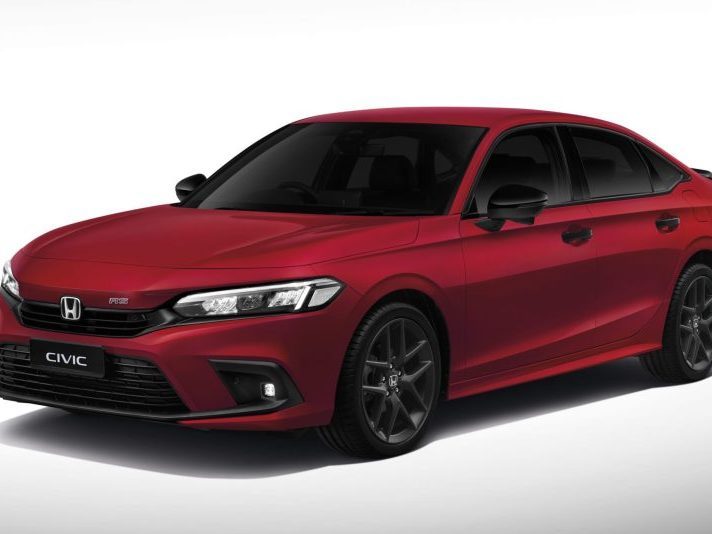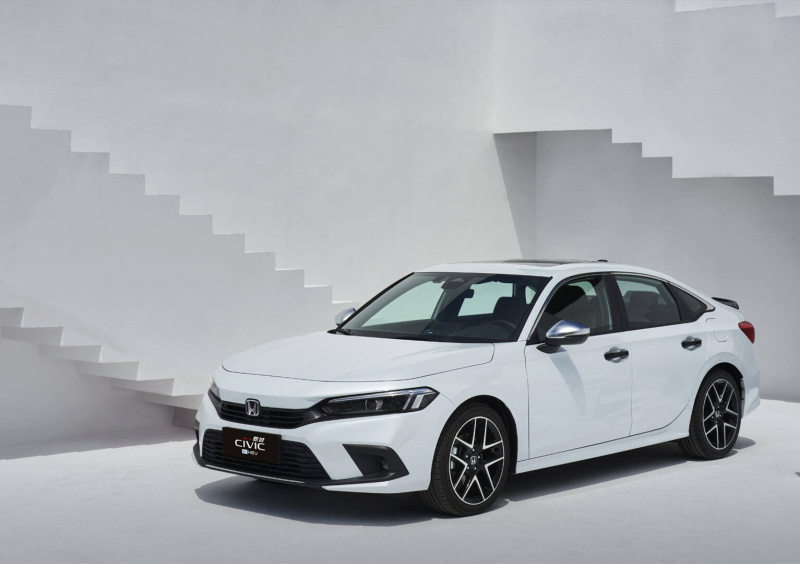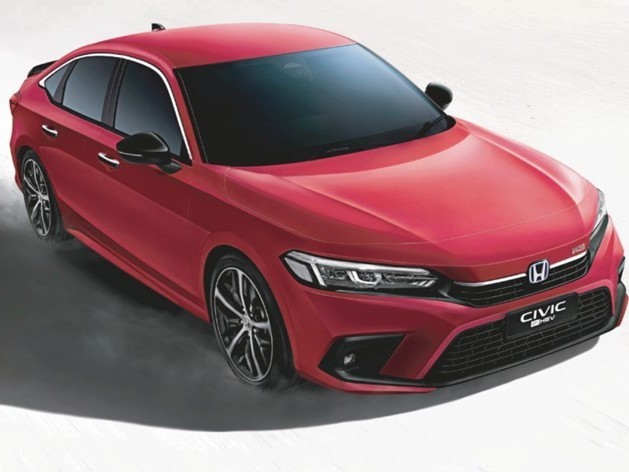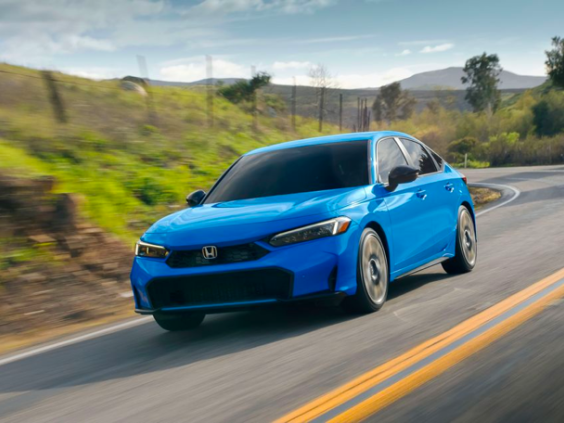Q
How much does an alternator cost for a 2018 Honda Civic?
For the 2018 Honda Civic alternator price, a brand-new OEM unit typically ranges from 1500 to 2500 Malaysian Ringgit, depending on the supplier and warranty period. Aftermarket or remanufactured alternators can be as low as 800 to 1500 Ringgit, but there will be variations in quality and durability. The lifespan of an alternator is generally between 80,000 to 150,000 kilometers. If your vehicle experiences issues like frequent dead batteries, dimming headlights, or abnormal electronic device behavior, these could be signs of an alternator problem. It's advisable to regularly check if the alternator's output voltage is between 13.5 to 14.5 volts to ensure it's functioning properly. When choosing a replacement, prioritize reputable suppliers or authorized service centers to avoid subsequent problems caused by inferior parts. If budget allows, OEM parts usually offer longer warranties and better compatibility, reducing potential future repair hassles.
Special Disclaimer: This content is published by users and does not represent the views or position of PCauto.
Related Q&A
Q
What is the value of a 2018 Honda?
The value of a 2018 Honda depends on factors like the specific model, mileage, condition, and trim level. For example, a 2018 Honda City typically ranges from 50,000 to 70,000 Malaysian Ringgit, while a Honda CR-V might be around 100,000 to 130,000 Malaysian Ringgit. The exact price also needs to consider maintenance records, accident history, and market demand. Used car retention rates usually relate to brand reputation, repair costs, and market popularity. Honda models perform well in the used car market, especially popular ones like the City and CR-V, known for their durability and low maintenance costs. To get a more accurate valuation of a 2018 Honda, it's advisable to check local used car platforms or consult professional appraisers. Also, keep an eye on new car price fluctuations and their impact on the used car market to make smarter buying or selling decisions.
Q
How much does it cost to replace a starter in a 2018 Honda Civic?
The cost to replace the starter motor on a 2018 Honda Civic typically ranges from 800 to 1500 Malaysian Ringgit. The exact price depends on the quality of parts used and the repair shop's pricing structure. OEM (Original Equipment Manufacturer) parts are 20% to 40% more expensive than aftermarket alternatives but offer better durability and compatibility.
The starter motor is a core component of the engine's ignition system, responsible for converting electrical power from the battery into mechanical energy to crank the engine. If you hear a continuous clicking sound or experience delayed starting when turning the key, these could be signs of worn starter motor brushes or a faulty solenoid.
In addition to the parts cost, labor fees usually account for 30% to 50% of the total expense. Professional technicians need to remove the intake manifold or undercarriage components to replace the starter, a process that takes approximately 1.5 to 3 hours.
It's advisable to choose a repair shop with experience specifically in Honda vehicles, as they are familiar with the layout of the car's electrical system and can avoid damaging surrounding wiring harnesses.
During regular maintenance, pay attention to the battery's health, as insufficient voltage can increase the strain on the starter motor. Regularly checking for oxidation on the terminal connections can also extend its service life. If your vehicle is equipped with an automatic start-stop function, it's recommended to inspect the starter motor's condition every 50,000 kilometers.
Q
How to reset 2018 Honda Civic after dead battery?
When the 2018 Honda Civic needs a reset due to a dead battery, first make sure you've installed a new battery and power up the vehicle without starting the engine right away. Wait about 10 minutes for the Electronic Control Unit (ECU) to finish its adaptive learning process on its own—during this time, it's normal for the dashboard warning lights to flicker briefly. If the one-touch window function stops working, manually roll each window all the way up and hold the switch in the up position for 3 seconds to reset the memory; for the sunroof, press and hold the close button for 10 seconds. The power steering might feel stiff temporarily—just turn the wheel fully left and right once at low speed to recalibrate it.
More broadly, modern car electronics rely on stable battery voltage. Frequently draining the battery can mess with the ECU's data storage, so it's a good idea to check the battery's health regularly. If you're leaving the car parked for a long time, disconnect the negative terminal or use a maintainer. Some owners have reported losing radio presets, which has to be reset manually—that's just the anti-theft system kicking in as a protective measure. If the warning lights stay on persistently, connect a diagnostic scanner to clear the error codes; you usually don't need to go to a service center specifically for that.
Q
How much should I pay for a 2018 Honda Civic?
Used 2018 Honda Civics typically range from RM70,000 to RM100,000, depending on condition, mileage, trim level, and whether original warranty is still intact. The 1.8L S trim sits at the lower end, while the fully-loaded 1.5L Turbo RS gets close to that upper limit. I’d recommend checking real-time prices on used car platforms or with dealers, and definitely dig into service records and accident history to avoid lemons. These cars are known for durability and fuel efficiency – the 1.5T engine packs a nice punch, perfect if you like a bit of driving fun, though turbo models do require keeping an eye on long-term maintenance costs. Civic also holds value well, so you won’t take a huge hit when reselling. Compared to rivals like the Toyota Corolla or Mazda 3, it handles better and has more space, though the cabin can be a bit noisier at speed. Before buying, shell out for a professional inspection to make sure the engine, gearbox, and other key components are in good shape. And don’t forget to factor insurance and road tax costs into your budget.
Q
What size battery is in the 2018 Honda Civic?
The 2018 Honda Civic typically comes factory-equipped with a 51R battery, a small to medium-sized unit measuring approximately 238mm in length, 129mm in width, and 202mm in height, with the negative terminal on the right side. It delivers around 500A in cold cranking amps (CCA) and has a capacity ranging from 40-45Ah, though exact specs might vary slightly across different trim levels. This is a maintenance-free battery, well-suited to local climate conditions, so you won't need to regularly check the electrolyte levels in daily use. When replacing the battery, it's best to stick with the original factory specifications to ensure compatibility with the vehicle's electronic systems. If you're considering upgrading to a higher capacity battery, make sure the alternator can handle the increased load. A car battery usually lasts between 2 to 5 years, but high-temperature environments can speed up aging. Regular voltage checks can help prevent sudden failures, and if you plan to leave the vehicle parked for an extended period, it's advisable to disconnect the negative terminal or use a battery charger for maintenance. Similar models like the Toyota Corolla or Mazda 3 also use batteries of comparable specifications, but the terminal polarities might differ, so always double-check during installation.
Q
Why does my 2018 Honda Civic battery keep dying?
If your 2018 Honda Civic battery keeps dying, there are a few common culprits to check. First, inspect the battery itself for aging – car batteries typically last 2-5 years. If yours is over 3 years old and you're having trouble starting the car, it's probably time for a replacement. Next, the charging system might be the issue, like a loose alternator belt or a faulty alternator that isn't properly charging the battery. You can test this by checking the voltage – it should read between 13.7-14.7V when the engine's running. Another possibility is parasitic drain: aftermarket devices like dash cams or sound systems might keep drawing power even when the car's off, or an electronic module could be malfunctioning and causing a leak. It's best to have a repair shop use an ammeter to check if the static current exceeds 50mA. Your driving habits matter too – frequent short trips prevent the battery from fully charging, and leaving the car parked for long periods leads to natural discharge. Try to drive it for at least 30 minutes a week, and if you won't use it for a while, disconnect the negative battery terminal. Finally, remember that modern cars have lots of electronics – replacing the battery might require resetting features like window auto-reverse, and some high-trim models need system matching, so it's better to go to a professional repair shop. Regularly checking the battery terminals for corrosion and keeping them clean can also extend its life. If the problem persists, a full inspection of the vehicle's electrical system is a good idea.
Q
How much does a car battery cost for a 2018 Honda Civic?
The battery price for a 2018 Honda Civic typically ranges from 300 to 600 Malaysian ringgit, depending on the battery type, brand, and where you buy it. Maintenance-free lead-acid batteries from major brands like Panasonic, Bosch, or Varta (usually 12V 45-55Ah) are more reasonably priced, while higher-performance start-stop batteries (EFB or AGM) can cost over 800 ringgit. It's advisable to choose a battery that matches the original factory specifications to ensure compatibility, especially for models like the Civic with intelligent charging systems—cheap batteries might affect the stability of electronic devices. When replacing, also check the battery size (common ones are NS40 or NS60) to avoid improper installation. You can extend the battery life by regularly checking the cleanliness of the terminals and avoiding frequent short trips. If the vehicle has trouble starting often or the battery warning light on the dashboard comes on, it's recommended to have the voltage tested as soon as possible. Additionally, some stores offer free installation or trade-in discounts for old batteries, so you can compare quotes from several repair centers or professional battery dealers before purchasing.
Q
Does a 2018 Honda Civic have a timing belt or chain?
The 2018 Honda Civic uses a timing chain instead of a timing belt. Both the 1.5-liter turbocharged engine and 1.8-liter naturally aspirated engine in this model are chain-driven. This design is more durable than traditional rubber timing belts—typically, there's no need for regular replacements. You just have to check the chain tensioner and lubrication system periodically, which can significantly cut down on long-term maintenance costs.
Made of metal, timing chains theoretically last over 200,000 kilometers. But in real-world use, you still need to change the engine oil regularly. Poor-quality oil can cause premature chain wear or annoying rattling noises. While chain systems might be slightly noisier than belts, modern engine sound-dampening tech has seriously mitigated that issue.
For owners, this design means ditching the hassle of replacing the belt every 60,000 to 80,000 kilometers. Though, under extreme driving conditions or with high mileage, it's a good idea to have a pro check the chain stretch every 100,000 kilometers. It's a stark contrast to belt-driven cars that need strict mileage-based replacements, giving owners way more convenience.
Q
How long should a battery last in a 2018 Honda Civic?
The battery life of a 2018 Honda Civic typically ranges from 3 to 5 years, depending on usage habits and climate conditions—hot weather tends to speed up battery aging. It's advisable to regularly check the battery status and avoid frequent short trips or long periods of inactivity, as these can lead to insufficient charging and shorten its lifespan. If you notice difficulty starting the engine, dim headlights, or unusual behavior from electronic devices, these might be signs that the battery is aging. The original equipment battery is of good quality, but when replacing it, you can opt for third-party brands that meet the specifications, making sure to choose a model suitable for tropical climates. Keep the battery terminals clean to prevent corrosion from affecting conductivity. If your car has many electronic devices, they can increase battery load, so you might consider upgrading to a higher-capacity battery. Repair shops usually offer free battery testing services, so you can have it checked during regular maintenance. Proper usage and regular maintenance can maximize battery life; after 3 years, it's recommended to check it every six months.
Q
How much is a new battery for a 2018 Honda Civic?
For the price of a new battery for the 2018 Honda Civic, it's usually between 500 to 1000 Malaysian Ringgit. The exact cost depends on the battery type, brand, and where you buy it. Original equipment (OEM) batteries are a bit pricier but offer better compatibility, while third-party brands like Panasonic or Bosch give good value for money. When choosing a battery, pay attention to the specifications – something like 12V with a capacity of 35Ah to 45Ah works best for this car. Also, check the Cold Cranking Amps (CCA) rating to make sure it starts reliably in cold weather. Beyond price, battery lifespan matters too – they typically last 2 to 5 years. Regularly checking for corroded terminals and avoiding frequent short trips can help extend its life. If your car struggles to start or the lights dim, those might be signs the battery is aging. It's best to replace it soon to avoid getting stranded. When buying, look for shops that offer free installation – it's much more convenient that way.
Latest Q&A
Q
What is the value of a 2018 Honda?
The value of a 2018 Honda depends on factors like the specific model, mileage, condition, and trim level. For example, a 2018 Honda City typically ranges from 50,000 to 70,000 Malaysian Ringgit, while a Honda CR-V might be around 100,000 to 130,000 Malaysian Ringgit. The exact price also needs to consider maintenance records, accident history, and market demand. Used car retention rates usually relate to brand reputation, repair costs, and market popularity. Honda models perform well in the used car market, especially popular ones like the City and CR-V, known for their durability and low maintenance costs. To get a more accurate valuation of a 2018 Honda, it's advisable to check local used car platforms or consult professional appraisers. Also, keep an eye on new car price fluctuations and their impact on the used car market to make smarter buying or selling decisions.
Q
How much does it cost to replace a starter in a 2018 Honda Civic?
The cost to replace the starter motor on a 2018 Honda Civic typically ranges from 800 to 1500 Malaysian Ringgit. The exact price depends on the quality of parts used and the repair shop's pricing structure. OEM (Original Equipment Manufacturer) parts are 20% to 40% more expensive than aftermarket alternatives but offer better durability and compatibility.
The starter motor is a core component of the engine's ignition system, responsible for converting electrical power from the battery into mechanical energy to crank the engine. If you hear a continuous clicking sound or experience delayed starting when turning the key, these could be signs of worn starter motor brushes or a faulty solenoid.
In addition to the parts cost, labor fees usually account for 30% to 50% of the total expense. Professional technicians need to remove the intake manifold or undercarriage components to replace the starter, a process that takes approximately 1.5 to 3 hours.
It's advisable to choose a repair shop with experience specifically in Honda vehicles, as they are familiar with the layout of the car's electrical system and can avoid damaging surrounding wiring harnesses.
During regular maintenance, pay attention to the battery's health, as insufficient voltage can increase the strain on the starter motor. Regularly checking for oxidation on the terminal connections can also extend its service life. If your vehicle is equipped with an automatic start-stop function, it's recommended to inspect the starter motor's condition every 50,000 kilometers.
Q
How to reset 2018 Honda Civic after dead battery?
When the 2018 Honda Civic needs a reset due to a dead battery, first make sure you've installed a new battery and power up the vehicle without starting the engine right away. Wait about 10 minutes for the Electronic Control Unit (ECU) to finish its adaptive learning process on its own—during this time, it's normal for the dashboard warning lights to flicker briefly. If the one-touch window function stops working, manually roll each window all the way up and hold the switch in the up position for 3 seconds to reset the memory; for the sunroof, press and hold the close button for 10 seconds. The power steering might feel stiff temporarily—just turn the wheel fully left and right once at low speed to recalibrate it.
More broadly, modern car electronics rely on stable battery voltage. Frequently draining the battery can mess with the ECU's data storage, so it's a good idea to check the battery's health regularly. If you're leaving the car parked for a long time, disconnect the negative terminal or use a maintainer. Some owners have reported losing radio presets, which has to be reset manually—that's just the anti-theft system kicking in as a protective measure. If the warning lights stay on persistently, connect a diagnostic scanner to clear the error codes; you usually don't need to go to a service center specifically for that.
Q
How much should I pay for a 2018 Honda Civic?
Used 2018 Honda Civics typically range from RM70,000 to RM100,000, depending on condition, mileage, trim level, and whether original warranty is still intact. The 1.8L S trim sits at the lower end, while the fully-loaded 1.5L Turbo RS gets close to that upper limit. I’d recommend checking real-time prices on used car platforms or with dealers, and definitely dig into service records and accident history to avoid lemons. These cars are known for durability and fuel efficiency – the 1.5T engine packs a nice punch, perfect if you like a bit of driving fun, though turbo models do require keeping an eye on long-term maintenance costs. Civic also holds value well, so you won’t take a huge hit when reselling. Compared to rivals like the Toyota Corolla or Mazda 3, it handles better and has more space, though the cabin can be a bit noisier at speed. Before buying, shell out for a professional inspection to make sure the engine, gearbox, and other key components are in good shape. And don’t forget to factor insurance and road tax costs into your budget.
Q
What size battery is in the 2018 Honda Civic?
The 2018 Honda Civic typically comes factory-equipped with a 51R battery, a small to medium-sized unit measuring approximately 238mm in length, 129mm in width, and 202mm in height, with the negative terminal on the right side. It delivers around 500A in cold cranking amps (CCA) and has a capacity ranging from 40-45Ah, though exact specs might vary slightly across different trim levels. This is a maintenance-free battery, well-suited to local climate conditions, so you won't need to regularly check the electrolyte levels in daily use. When replacing the battery, it's best to stick with the original factory specifications to ensure compatibility with the vehicle's electronic systems. If you're considering upgrading to a higher capacity battery, make sure the alternator can handle the increased load. A car battery usually lasts between 2 to 5 years, but high-temperature environments can speed up aging. Regular voltage checks can help prevent sudden failures, and if you plan to leave the vehicle parked for an extended period, it's advisable to disconnect the negative terminal or use a battery charger for maintenance. Similar models like the Toyota Corolla or Mazda 3 also use batteries of comparable specifications, but the terminal polarities might differ, so always double-check during installation.
View MoreRelated News

Honda Civic Interior Revealed: A Comprehensive Analysis of Civic’s Interior Charm
Kevin WongJul 10, 2025

Honda Civic Price Revealed: The Most Detailed Buying Guide!
AshleyApr 8, 2025

Whether it's about appearance or handling, why do young people all like Honda Civic?
WilliamSep 24, 2024

2022 Honda Civic: Hybrid car with the fastest acceleration, lowest fuel consumption, who says eco-friendly cannot be fast
JohnSep 3, 2024

2025 Honda Civic debuts, minor changes in appearance, has 1.5 Turbo model been discontinued?
LienMay 22, 2024
View More













 Cars
Cars
Pros
Cons